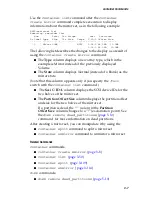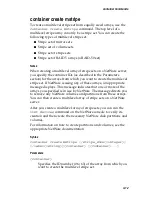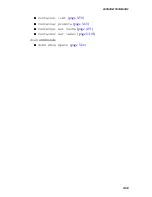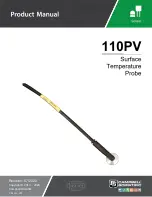
3-21
container Commands
container create raid5
To create a RAID 5 array, use the
container create raid5
command. The RAID 5 array must have a minimum of three disks.
When creating the RAID 5 array, you must initialize the array
parity by using the scrub method (the
/scrub
switch).
Notes
If you created a RAID 5 array you can run the
list devices
command on the NetWare console to verify its creation and then
create the necessary NetWare disk partitions and volumes.
For information on how to create partitions and volumes, see the
appropriate NetWare documentation.
Syntax
container create raid5 [/cache{=boolean}]
[/clear{=boolean}] [/stripe_size{=integer}]
[/label{=string}] [/scrub{=boolean}]
[/wait{=boolean}] {free_space} [{scsi_device}...]
Parameters
{free_space}
Specifies the SCSI device and its associated freespace used to
create the RAID 5 array.
For further details, see
free_space
on page 1-11
.
{scsi_device}...
Specifies one or more SCSI devices. A SCSI ID consists of a
SCSI bus number (e.g., 0, 1, 2, 3, etc.), SCSI device ID (0 through
15 inclusive), and SCSI device logical unit number (0 through 7
inclusive). See the installation guide for your controller to
determine the number of buses it actually supports.
For further details, see
scsi_device
on page 1-10
.
The command uses the freespace(s) from the SCSI device(s)
you specify to create the RAID 5 array. The size that the
command uses from these device(s) is identical to the one you
specify in the
free_space
parameter. The minimum number
of partitions in a RAID 5 array is 3, and the maximum number
of partitions is 16.
Summary of Contents for AAR-2020SA
Page 1: ...R Command Line Interface Reference Guide...
Page 107: ...3 76 container Commands container extend file_system page 3 40 container list page 3 50...
Page 170: ...4 24 controller Commands Related Commands controller commands controller details page 4 2...
Page 220: ...7 4 logfile Commands Related Commands logfile commands logfile end page 7 2...
















































